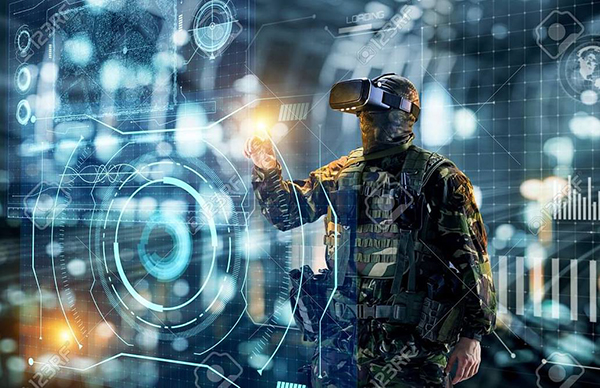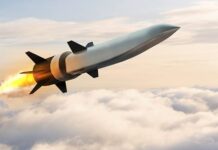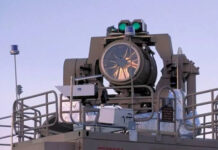
The Key to Tilting The Balance in War
The ‘Just War’ tradition incorpo-rates a mutually agreed set of rules evolved between two culturally similar adversaries; adversaries to whom, civilizations travelled across land-mass to vie for seat of learning! Here the anta-gonists differ greatly in spite of being the two oldest known civilizations in the history of mankind – differing in ethnicity, race, language and most importantly in its beliefs.
China, blinded by its hegemony and ferment expansionism, has embarked to rock the boat on many fronts. On the Himalayan frontier with India in Eastern Ladakh, at the South China Sea (SCS) with South East Asian nations and the littorals, the Yellow Sea bordered on the west and north by the Chinese provinces Hebei, Tianjin, Shandong and Liaoning adjoining the East China Sea (ECS), reclaiming the Pamirs (when Tajikistan was forced to cede a 1158 Sq km of territory in the Pamirs to China as part of debt forgiveness deal), claiming parts of Bhutan and Nepal. Fermenting trouble in the Xinjiang Autonomous Region by carrying out a demographic change of the Uighurs Muslims, shifting them into detention centers to de-Islamicise or Sinicise them and conducting crackdowns from Tibet to Inner Mangolia.
Downward Spiral
The canvas drawn out by China in a pre-emptive bid to consolidate Xi Jinping’s powers before the Centenary celebrations of the Chinese Communist Party (CCP) and materialization of the lofty ‘China Dream’ in 2021 appears deranged. Seeing India’s stand, the smaller powers have started to show gall. Indonesia refused bases to the Chinese and is vehemently objecting to Chinese transgressions in the Natuna Sea. The row with Australia is worsening. Taiwan has issued warnings of retaliation in case of violations to their airspace and Hong Kong simmers despite the issue of a wide ranging new Security Law by China on 30 June 2020. The latest step is the downward spiral in relations with its dueling economic adversary, the US, with both sides imposing visa restrictions, new rules on diplomatic travel, and the expulsion of foreign correspondents, besides closing selective Consulates, triggering a Trade War that threatens the sanity of the world markets.
ALSO READ: Future Military Technologies : Gen MM Naravane on Changing Characteristics of Warfare
The condition of ‘jus ad bellum’ obviously thrown to the winds have had realists, who have studied Thucydides’ ‘History of the Peloponnesian War’, comment why Carl von Clausewitz’s ‘War invariably being the extension of politics by other means,’ and ensconced by China’s President, Xi Jinping in the ensuing transgressions – forensically implicates involvement of the highest office. Axiomatically, in Eastern Ladakh against India, the plans for Chinese transgressions would have been chalked out at the highest central levels, when a major winter training exercise in the Tibet Autonomous Region (TAR), in keeping with the revised Chinese paradigm of ‘Realistic Training’ enunciated in the Chinese DefenceWhite Paper of 2019 titled, ‘China’s National Defense in a New Era’, highlighting Chinese emphasis on “combat readiness and military training in real combat conditions”, swung hundreds of kilometers Westwards opposite the Depsang Plains, unprovoked, in complete order of battle.
Technology – the Joker in the Pack?
The Chinese military manoeuvres in TAR, in April this year, took the Indian security establishment by surprise with no palpable reason to alter decades of peace and tranquility and compromising the confidence building measures (CBM) had governments huddle, building international diplomatic consensus against unilateral Chinese actions. Whilst in the ensuing months the melee vacillated from hardening of postures to exercising quid pro quo (QPQ) options with the hyperventilating media waxing eloquent on Indian options, the one aspect that was heard as whispers in the corridors pointed once again to an Intelligence shortfall.
Indian Army’s entanglement to combat Coronavirus by declaration of ‘Operation Namaste’, and with imbued professional trust on the Chinese for adhering to the decades old agreements and treaties, that since lay shattered, could technology have altered the discourse and forced a decision matrix when forays into hithertofore contested, but unoccupied areas were being transgressed with motives to change the status quo in a by now colloquial terminology for land grab – ‘salaami slicing’? Speaking at a two-day seminar on the “Impact of Disruptive Technologies on Our Fighting Philosophy in Future Conflicts”, as part of the Defence and Strategy Seminar 2020 at Army War College, Mhow, the Indian Army chief Gen MM Naravane, in end-August, clearly highlighted the impact of disruptive technologies like artificial intelligence (AI), cloud computing, robotics, 5G, cyber, augmented reality, virtual reality, mixed reality (AR/ VR/ MR), Big Data analytics, quantum computing and cyber warfare as being a course deciders for future wars.
Technology spiral is like the proverbial joker in the pack. You never know when the next disruption takes the security industry by storm and the previous solution gets lost in the shuffle. The horizon of technological development is vast and fast changing in character – offering imaginative and intelligent palates. There is plenty of operating space, both for the imbecile and the endowed, with customer raking in the benefit of cost and utility as per their own manifestation and needs.
ALSO READ: Contactless War: Dawn of a Dialectical Evolution in Warfare
Intelligent monitoring and detection systems form the harbinger of such developments, now juxtaposing advanced video analytics and facial recognition tools for forensics. Big Data, robotics and visualization riding on a common architecture of machine learning (ML) have revolutionized beliefs and facilitated outcomes. Light Detection and Ranging (LiDAR) sensors due to their principles of operation, price, performance, reliability, size, weight and power efficiency seem to have provided the disruption in the security industry. Commercialization finds applicability along hostile border environments, where the difference between detection of an infraction and an intrusion is often a national security compromise. The Eastern Ladakh impasse with China only substantiates the point.
Military intelligence gathering includes multi-discipline activities ranging from human intelligence (HUMINT), signals intelligence (SIGINT), imagery intelligence (IMINT), measurement and signatures intelligence (MASINT) and open source intelligence (OSINT). Dedicated military satellites with ISR functions give details with pin point accuracy and have become central to military operational planning at higher levels but have their attendant limitations of pass, orbiting height, drag and image resolution. Whilst all organs of the State machinery function as per their charter, many a task force in the past have recommended statutory changes to institute more accountability with contemporary intelligence acquisition means to mitigate the challenges and usher new age technologies. This article endeavours to showcase only a ‘Splice of the Intelligence Pie’, at the altar of disruptive technologies.
Succor in the Convoluted Canvas
Mapping large inaccessible expanse of ground requires an airborne moving LiDAR, mounted atop an aerial platform. The topographic LiDAR, as it is called for this use case, is used in many civil applications for forestry, hydrology, geomorphology, urban planning, landscape ecology, coastal engineering, survey assessments and volumetric calculations. The terrestrial LiDAR generates dense point cloud, of immense utility for identifying target objects for use in analytics and creating 3D replicable models, ideal for war planning.
The PLA Army (PLAA) has been conducting training and live exercises codenamed ‘Stride and Firepower’. The PLA Navy (PLAN) has also been conducting training in the far seas, deploying aircraft carrier task group and the PLA Air Force (PLAAF) has conducted combat patrols in SCS and security patrols in the ECS and operated in the West Pacific. The PLA Rocket Force (PLARF) on the other hand has organized ‘force-on-force’ evaluation-oriented training and joint manouevres code-named “Heavenly Sword”, as part of the Chinese ‘Combat readiness and military training in real combat conditions’ paradigm.
Sensors like remote video surveillance, unattended ground sensors, radars and cameras dexterously cherry picked, smartly fused and curated with deep logic algorithms bind a perfect visualization for the user’s situational awareness. LiDAR, an optical radar, uses active remote sensing techniques with its properties of scattering, absorption, reflection, and fluorescence to facilitate detecting, tracking and classification and identifying the physical properties of the target objects/ activities. The details that can manifest off a LiDAR include detection range at reflectivity rates, vertical and horizontal resolution, points per second, laser wavelength, angular accuracy, beam divergence and field of view convergence amongst others, yielding a fair amount of detail of the target profile under all conditions of weather and temperature. A commensurate attack profile can then be mounted based on these fixes to take out the target with the precision of a surgeon’s knife. LiDAR produces mass point cloud datasets that can be managed, visualized and analyzed, leveraging immense operational utility in the field. The systems work with precision and renders accuracy in centimetres. Use of this disruptive technology in Eastern Ladakh would have generated a real time cogent operational picture for own force orchestration, retention of operational balance and disbursed a cogent response mechanism to stymie Chinese designs.
Sensors vary in form, size and characteristics that define their fidelity and, therefore, utility. Today, these are extensively being used for mapping, in geographic information systems (GIS), for terrain profiling, to aid deforestation and a host of other civil applications. The operational control needs to spell out a sensor framework that tracks targets over time, using disparate sensors of varying sensitivities and characteristics, yielding a fused output picture for ease of decision making. After factoring AI and ML in the algorithms, the data sets generated over time will only produce more cogent and hard intelligence, negating false echo and noise.
Non-kinetic effects on the target country without the timestamp of the aggressor, alters the punitive capability it brings to bear and places target nations at the profanity of constant war. Political scientists have debated revised definitions of war, peace, limited/unlimited wars, grey-zone warfare, hybrid wars and skirmishes, through the prism of ways-ends-means analysis, presenting ambivalence in the conflict zone. The battle will no longer be joined and yet nations will be at war. The targets will shift from military to economic and degrade the comprehensive capability of nations to wage war. The military would perhaps be the last to participate in the kinetic parleys that it has been ordained and trained to unleash. Technology use with hackers and deep fakers will shape perception and endeavour to cloud decision-making and situational clarity, a la, Global Times. Reliance on technology to warn, mitigate and launch counters – in that order – will need to be unleashed. The capabilities accompanying infusion of such technology will provide much succor in the convoluted environment.
Speed of decision-making has always been of temporal consideration since Col Boyd defined disruption of the enemy observe-orient-decide-act (OODA) cycle. Lately, the quality of decision-making is under focus using AI and ML. Platforms based on the unmanned aerial systems (UAS) are integrated into force protection systems so that a tempered force projection capability in acceptable time frame is created. For this, all assets under the command of an operational commander are synchronized and a common operational picture (COP) generated.
A holistic object-tracking framework aided and abetted by AI and Deep Learning algorithms needs to be incorporated amidst the operational planning resources. The labeled data being generated almost real-time by processing information at the ‘Edge’, without having to port it to cloud-based servers, saves on latency, protects the data from third-party custodian of servers and offers the leverage to the operational commander to make considered decisions on the spot. The AI also converges data types from differently abled sensors with varying size, fidelity and sensitivities; generating different spatial and temporal sample rates and resolution, and offers a high-fidelity fused output.
Conclusion
The US has derived that hitting a target is no longer the issue for them. It is the speed of decision-making identified as amongst the most important of the military capabilities. As is evident from the postulates of effect-based operations (EBO) the desire is not always to unleash kinetic effects on the target force. It is the need for accurate information that drives persistent surveillance.
Analytics, automation and visualization are the layers that need to be embedded into the operational resources of the field commanders. The next set of actions would depend on sifting and interpretation of data. Following a ‘System of Systems’ approach that entails selecting the correct platform, picking the right sensors and targeting the back-end processing, will derive the required disruption in the process.
Sensor technology, in the Indian context needs to be software-defined, with open architecture, built on standard protocols and open to technology insertion over their life cycles. AI has the potential to help decision-making in ambiguous situations. In the India-China context, the situations on ground require some human judgment for which AI would be an apt adjudicator.
Capability development is an ongoing process that India can hardly relegate any further. With the gravity of the Chinese military weight knocking at the Indian gateway, a force-on-force build up will yield no lasting outcomes; opening additional fronts making little strategic sense. A succinct tilt towards layering our operational planning with disruptive technology will facilitate balance in India’s favour and indeed be a course decider for future wars.

















